Abstract
The method by which patients receive health information continues to change in this new age of increased information and technology. Long gone are the days of the mystique surrounding the physician's prescribing of a medication to cure their patients ailment. In recent years, this mystique has been replaced with more informed patients that bring their questions and concerns their doctor in anticipation of open dialogue. At the other end of the spectrum are the patients that come to the visit armed with notes, copies of Web pages, information from their home medical reference books and information heard or seen from the latest advertisements directed to the consumer about a medication for a self diagnosed disease. The majority of physicians have welcomed and encouraged patients to take on more responsibility of their health and appreciate the dialogue. This is preferred to the patient who sits motionless and nods his/her head in blind agreement with the proposed plan of action. Physicians have read the data on patient compliance and medical outcomes and understand that an informed patient is an ally and not an enemy. However, is there a difference between an informed patient that asks questions seeking a more active role in their healthcare versus a demanding patient that believes that their knowledge base is equal to the physician, thereby reducing the physician to a vending machine dispensing requested prescriptions with little insight or deviation from the patient's demands? Fundamentally, we know that physicians agree that our profession dictates that we use all of the medical knowledge at our fingertips, our interpersonal skills and judgment in making recommendations to our patients. We refuse to be reduced to a simple dispenser of desired medications with no regard to the patient and their well being and in fact are incensed with the assumption that our profession has been reduced to such mediocrity. However, we prefer the middle ground with our patients, neither the demanding or the complacent are our preference, we want relationship and believe that this will improve the patient's health status. The question is whether the increased information, dialogue, and patient involvement utilizing the information from new sources are a good thing, a bad thing or simply a reality of medicine's entrance into the information age. Must we encourage our patients to take an active role in their healthcare but place boundaries on the venues by which they receive information? How do patients interact with their physician in the office after exposure to an ad for a prescription medication? How do physicians react to the questions and do we encourage the interaction? What is the effect of the pharmaceutical industry marketing directly to our patients? Do we know and how will we ever fully assess the impact? Although these questions have no succinct answer, the physician and the patient dyad must be the guiding barometer.
Full text
PDF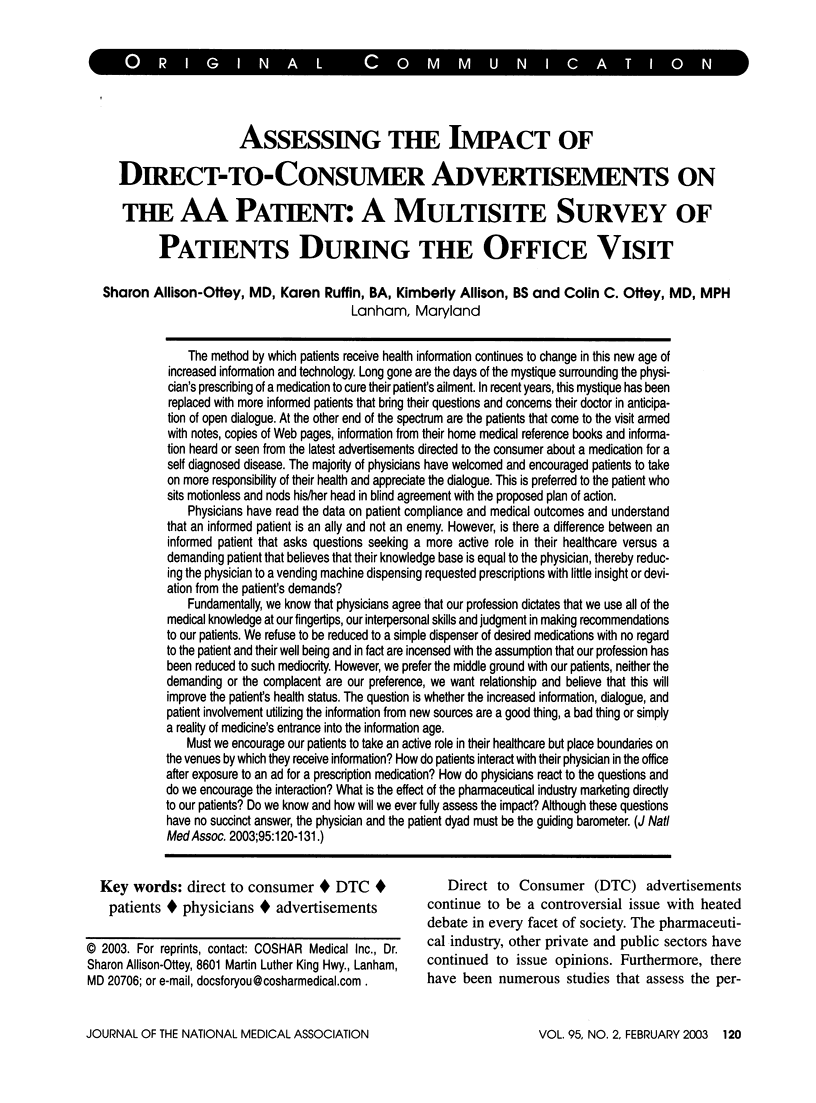
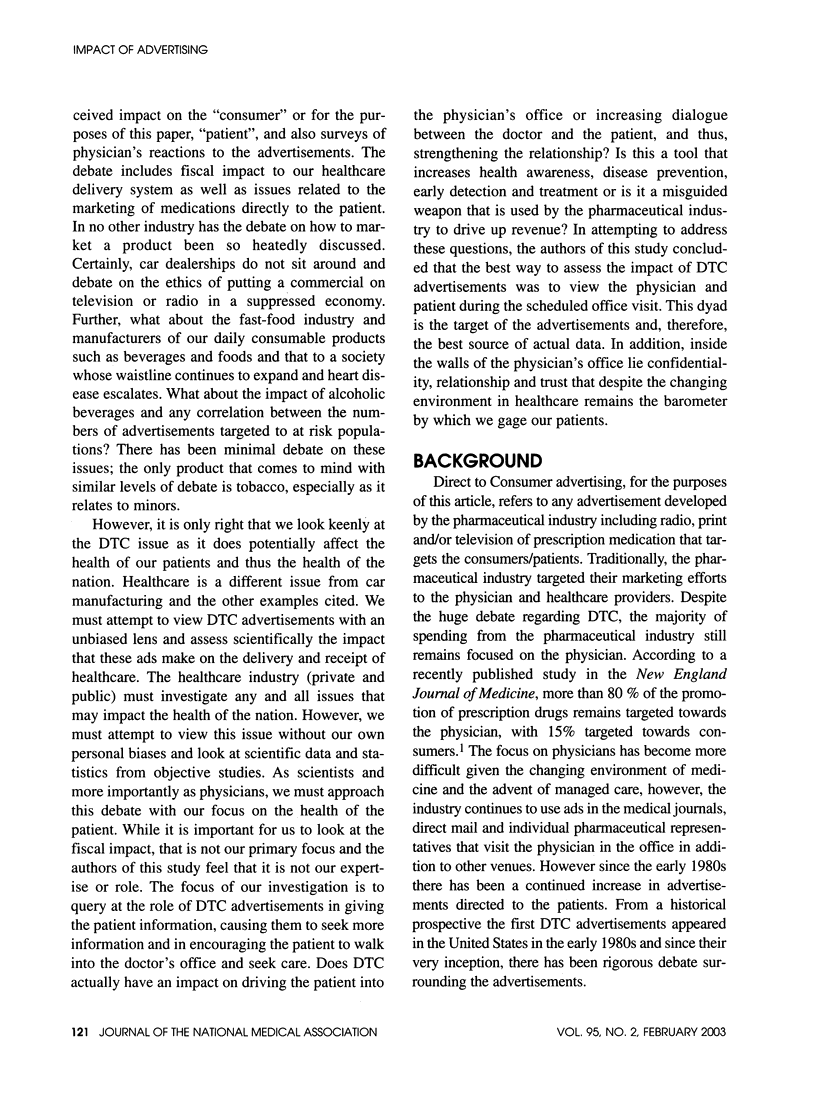
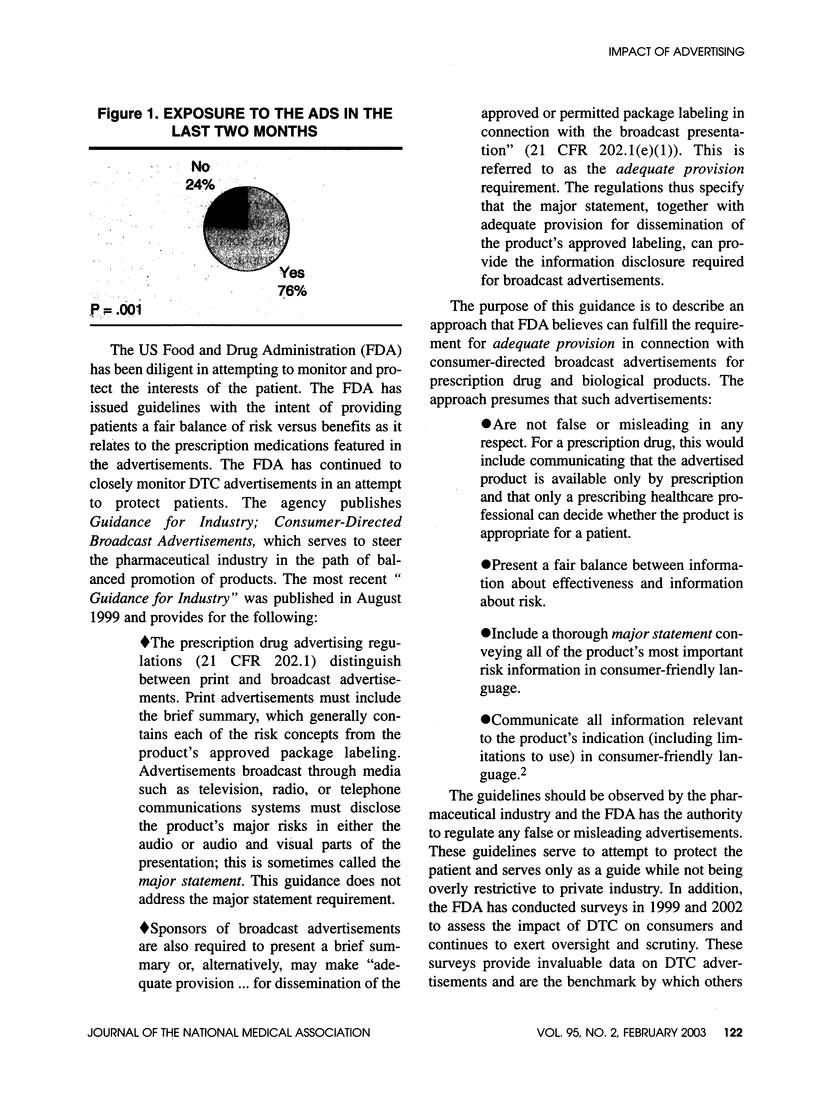
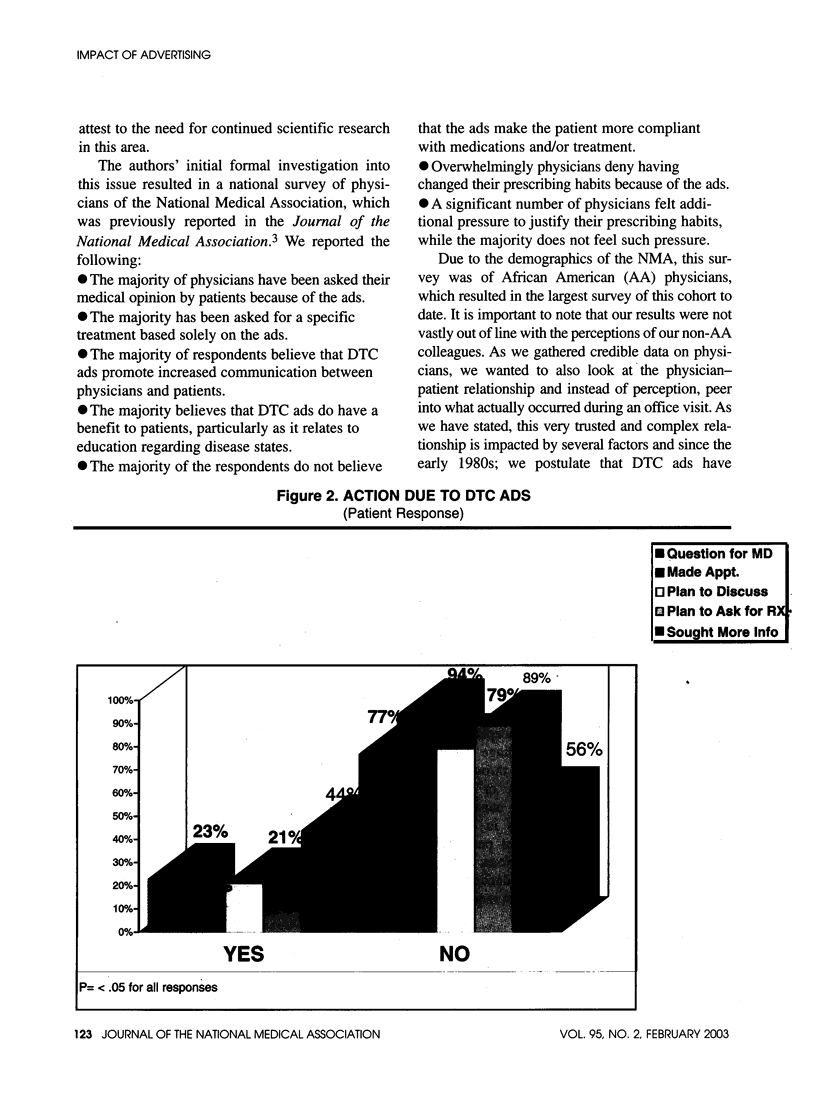
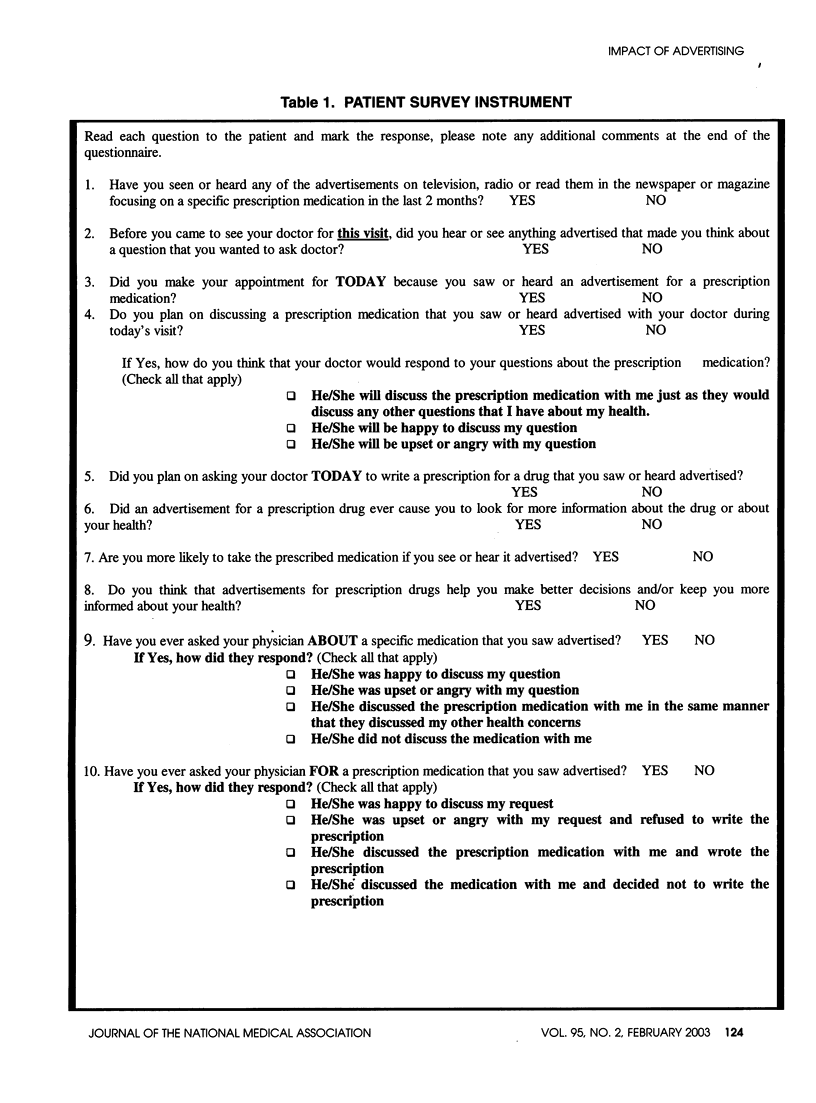
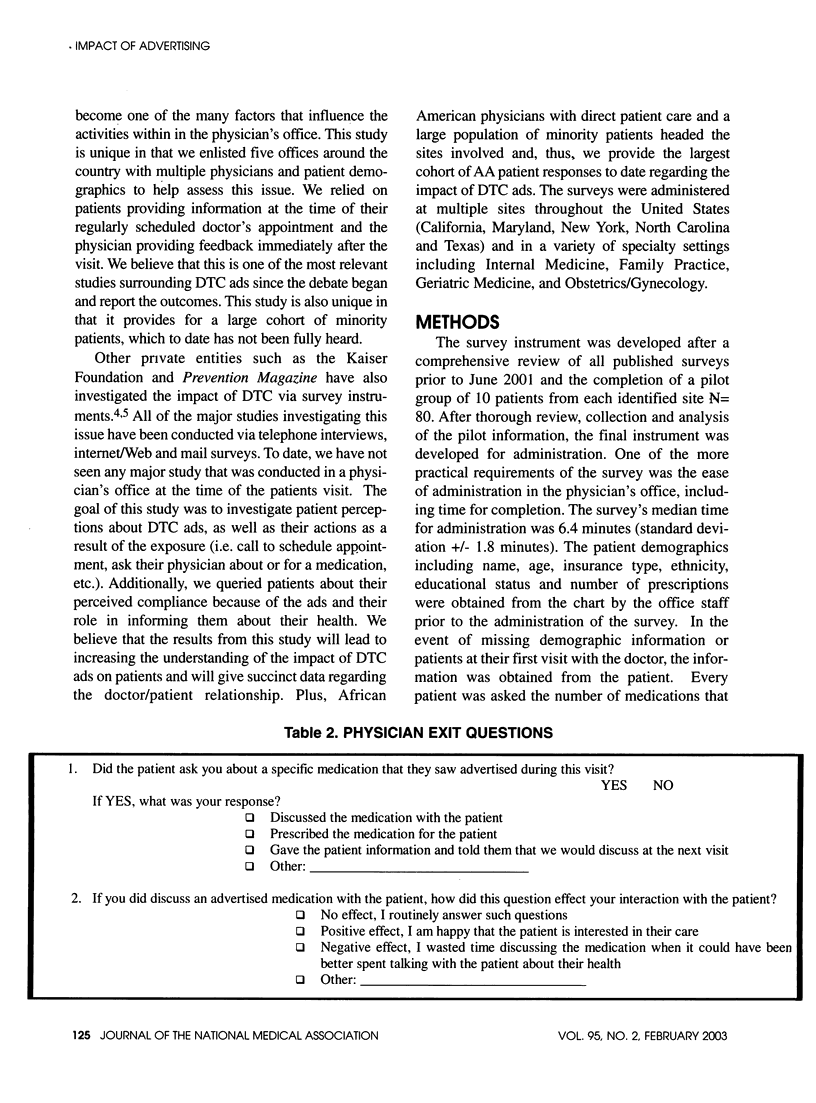
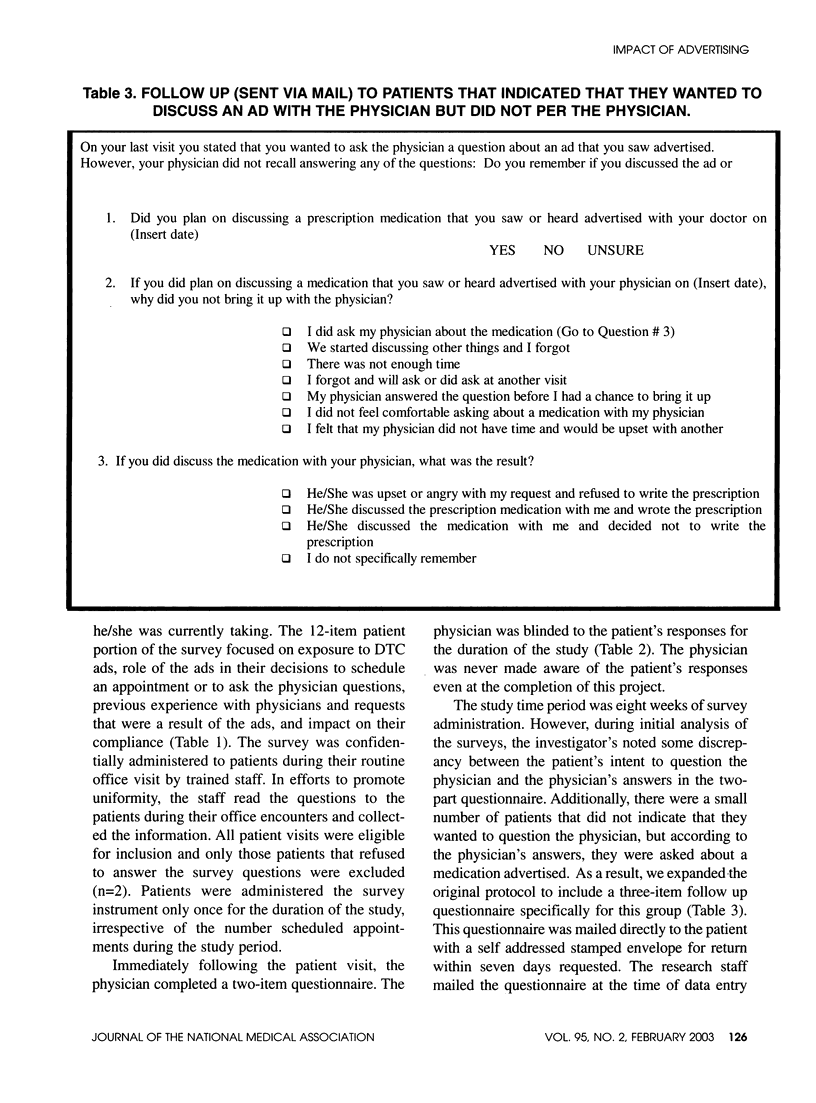
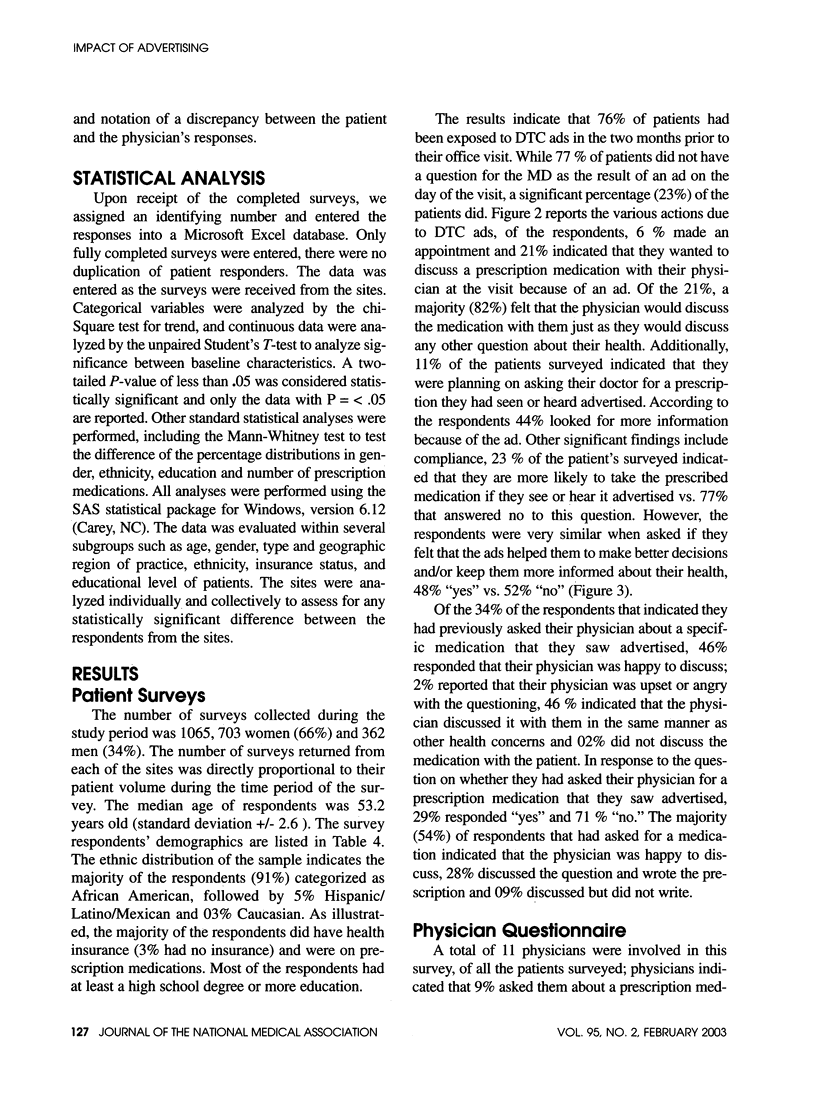
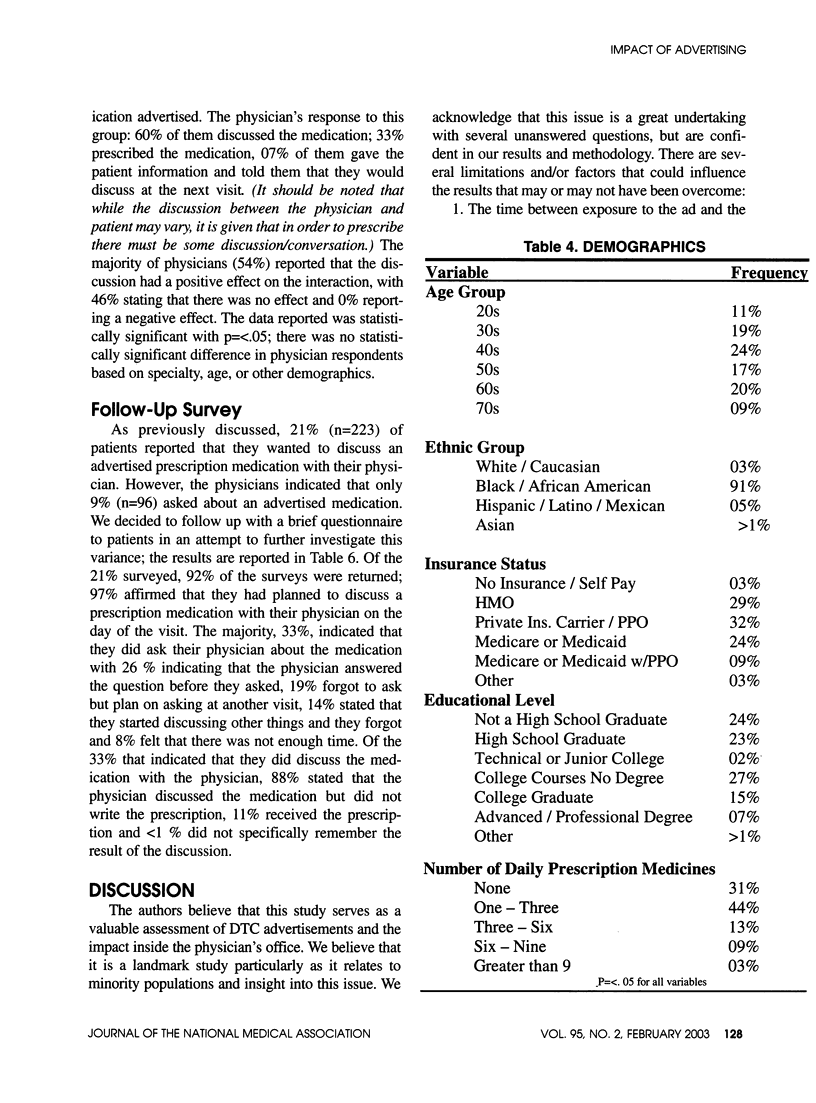
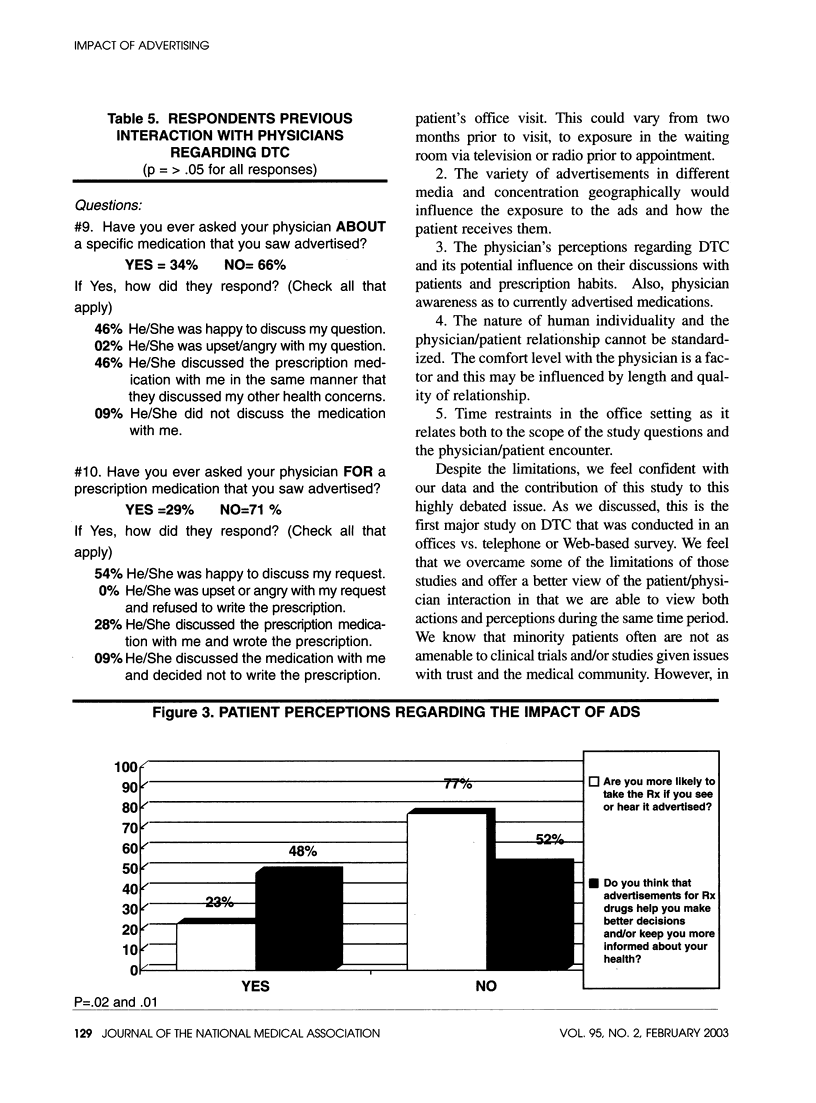
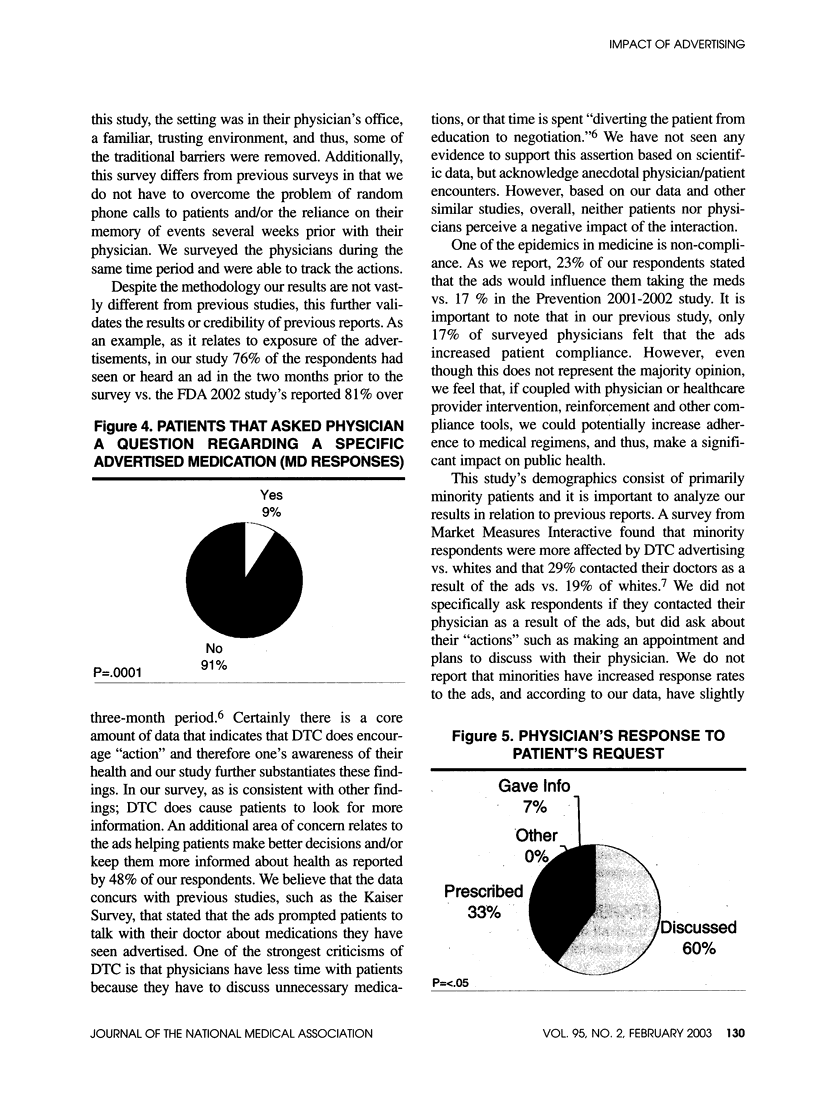
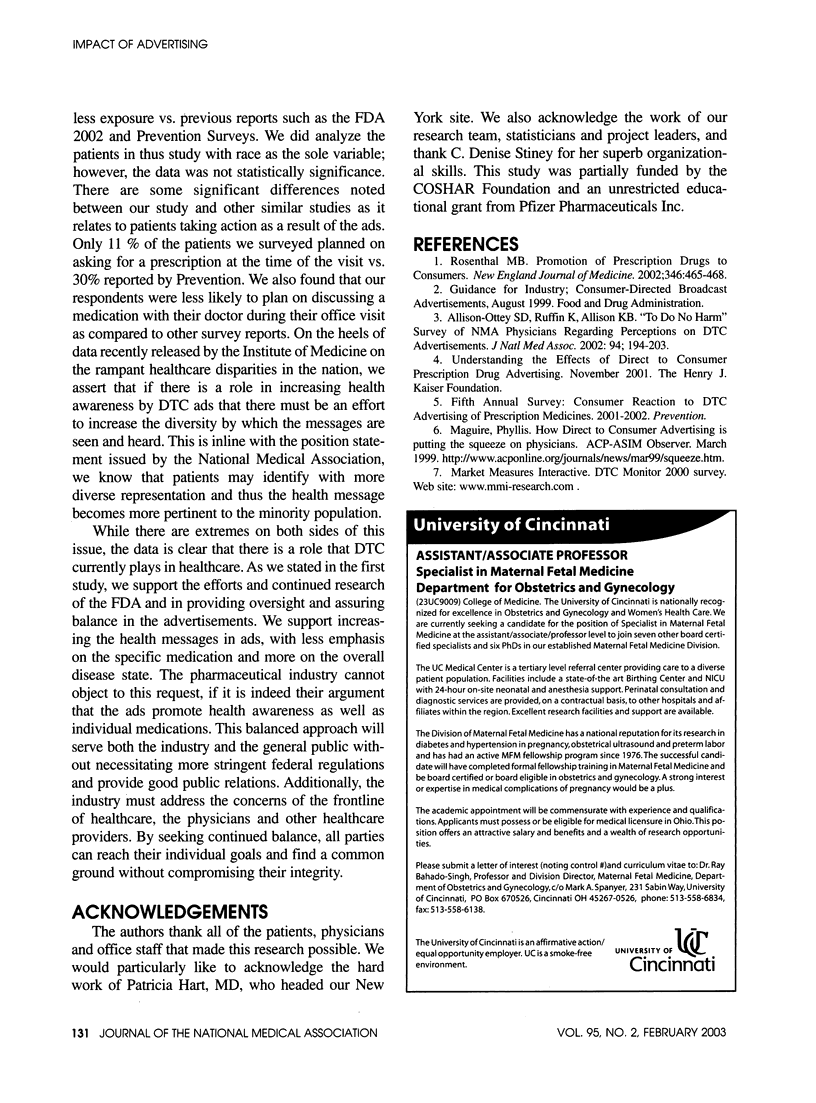
Images in this article
Selected References
These references are in PubMed. This may not be the complete list of references from this article.
- Allison-Ottey Sharon D., Ruffin Karen, Allison Kimberly B. "To do no harm" survey of NMA physicians regarding perceptions on DTC advertisements. National Medical Association. J Natl Med Assoc. 2002 Apr;94(4):194–202. [PMC free article] [PubMed] [Google Scholar]



